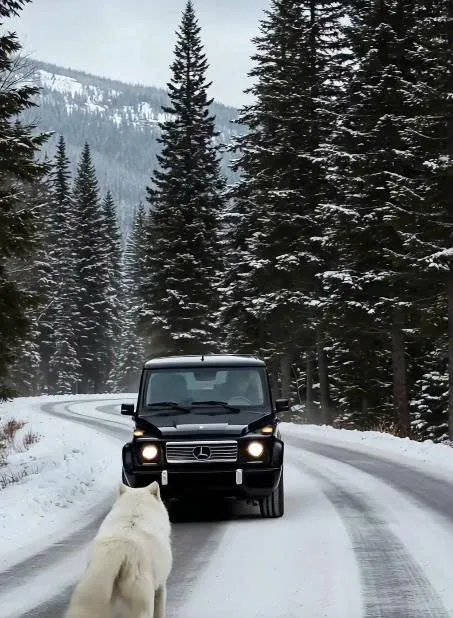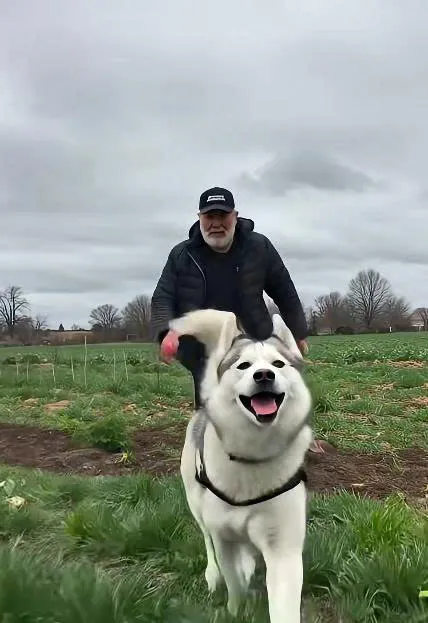Alone in the Wilderness: The Heartbreaking Cry of a Lost Wolf Cub and the Stunning Rescue That Saved Its Life
Lost Wolf Cub Successful Rescue Mission
In the rugged wilderness of North America, where howls echo across valleys and snow blankets the ground in silence, a desperate search-and-rescue mission unfolded. At the heart of it was a lone wolf cub, separated from its pack and fighting to survive. What happened next was captured on camera, becoming a powerful documentary moment that left audiences worldwide both heartbroken and inspired.
The Lone Cry
The story began when researchers monitoring a pack of gray wolves noticed unusual signs. The alpha female had given birth to a litter of five cubs in the spring, but as summer advanced, one of the pups had disappeared.
For days, faint howls were heard echoing through the forest—high-pitched, weak, and filled with fear. Tracks revealed the truth: one cub had strayed too far, likely frightened during a storm, and had become hopelessly lost.
“Wolves are deeply social,” explained Dr. Karen Wells, a wildlife biologist. “A cub alone has almost no chance of survival. Without its pack, it cannot hunt, cannot defend itself. Every hour apart means danger.”
The Dangers Mount
Alone in the wilderness, the cub faced terrifying odds. Coyotes prowled nearby, black bears foraged for berries, and eagles circled above. The cub’s small body, only a few months old, lacked the strength to fend off predators or endure the cold nights.
Hidden cameras set by the documentary team captured heartbreaking footage: the cub wandering aimlessly, crying out for its mother, pawing at the earth in hunger. Each day it grew weaker.
“It was gut-wrenching,” one cameraman admitted. “We’re supposed to observe, not interfere. But watching that tiny wolf cry for its pack—it broke us.”
The Rescue Mission
Finally, with approval from local wildlife authorities, the team was allowed to intervene. A plan was made to capture the cub safely and attempt to reunite it with its pack.
The rescue required precision. Wolves are wary of human scent, and any misstep could cause the pack to reject the cub. The team used tranquilizer darts calibrated for the pup’s size, then moved swiftly to secure it in a protective crate.
“When we approached, he tried to snarl, even in his weakness,” Dr. Wells recalled. “That tiny growl showed his spirit. He hadn’t given up.”
Reuniting With the Pack
The next challenge was finding the pack. Wolves roam wide territories, sometimes covering dozens of miles in a day. Using tracking collars already placed on the alpha female, the team located the family near a dense forest ridge.
At dusk, they placed the crate a safe distance away and retreated, cameras rolling. Slowly, they opened the door. The cub hesitated, then stepped out, sniffing the air nervously.
Moments later, a haunting howl pierced the air. The alpha female emerged from the trees, her massive frame outlined against the setting sun. The cub whined and bounded forward. In seconds, mother and pup collided in an embrace of fur and sound—licks, whimpers, and howls blending into a symphony of reunion.
The pack circled, sniffing the cub, accepting it back into the fold. For the first time in weeks, the little wolf was no longer alone.
Emotional Reactions
The documentary footage captured everything: the cub’s desperate cries, the tense rescue, and the breathtaking reunion. Viewers described it as one of the most moving wildlife moments ever filmed.
“I cried watching it,” one reviewer wrote. “Seeing that mother run to her baby reminded me of the bond every parent shares.”
Social media exploded with admiration:
-
“Proof that family bonds exist in every species.”
-
“This is why conservation matters.”
-
“The best wolf documentary moment ever.”
The Science of Bonding
Experts explained why the reunion was successful. Wolves identify each other through scent and sound. Despite the time apart, the cub’s unique smell and cries triggered instant recognition from its mother.
“Wolves are fiercely protective of their young,” Dr. Wells noted. “The fact that this mother accepted her pup back so quickly shows the depth of their emotional connections. They don’t forget their own.”
A Symbol for Conservation
Beyond the emotional impact, the story carried a powerful message about conservation. Wolves remain a controversial species, often vilified by ranchers but vital to ecosystems. Their presence controls prey populations and maintains balance in forests.
“This cub’s survival isn’t just about one animal,” Dr. Wells emphasized. “It’s about the future of the pack, and the role wolves play in keeping nature healthy. Every wolf matters.”
The documentary’s release has already inspired fundraising efforts for wolf protection programs, with thousands donating to support research and rescue missions.
Lessons Learned
For the filmmakers, the experience was life-changing. “We set out to document wolves,” said director Ethan Cole, “but what we found was a universal truth: family bonds transcend species. Watching that cub return to its mother was the most powerful moment of my career.”
For the audience, the takeaway was equally profound: survival often depends not only on strength, but on the bonds of love, loyalty, and unity.
Conclusion
The rescue of the lost wolf cub stands as a testament to resilience, compassion, and the extraordinary ties that hold families together—whether human or animal.
From the lonely cries in the wilderness to the triumphant reunion with its mother, the story has captivated millions, reminding us why we fight to protect wildlife.
The cub, once on the brink of death, now thrives within its pack, running through the forests with strength renewed.
And thanks to the cameras that captured every step, the world will never forget the incredible rescue mission that turned despair into hope.





